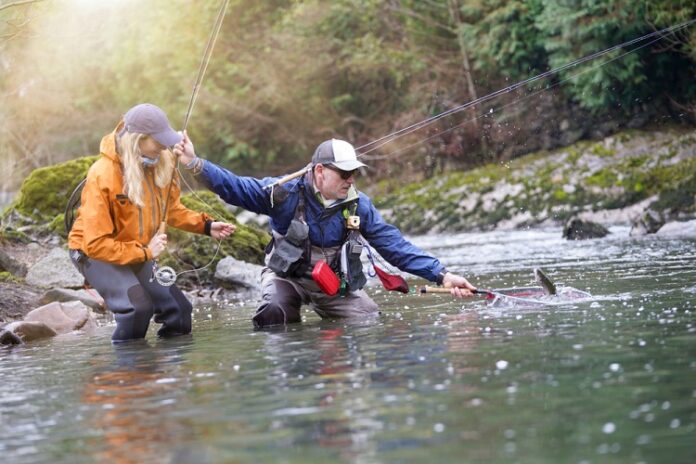If you’re looking for an amazing sport that’s great for both novices and veterans, then there’s no better sport to try than fly fishing. Not only will you get to relax in the beautiful outdoors, but you’ll also have the opportunity to learn more about nature and get that incredible little adrenaline kick every time you reel in a catch. Before booking your first big trip, however, it’s super important to make sure you plan accordingly and have all of your licensing and fly-fishing equipment in order. Read on for some tips in planning your first big fly-fishing adventure so that your vacation will go off without a hitch!
Table of Contents
Planning Your Location
One of the first steps in planning any big fishing trip is determining where you want to go. Whether you want to stay somewhere close to home, or even take a road trip out of state, it’s important to brainstorm a few options in the area you’re interested in. Make sure you’re also looking into things like water levels and temperature during that time of year so you can get a good feel for the conditions. Finalizing your location at the start is a great way to ensure you’re choosing the correct gear for both the environment as well as what type of species you’ll be fishing for.
Getting Proper Licensing
The next big step once you’ve settled on the location is to make sure you’ve sorted out all of the necessary licensing requirements. You’ll need to ensure that you’ve got a registered state fishing license in whatever state you’re planning on fishing in. It’s well worth the investment as fines for not having one can be over a couple of hundred dollars, much more than the actual license will cost you. Additionally, safe and legal fishing is crucial to both protecting the environment and ensuring the sustainability of the sport, along with also supporting water conservation, so please make sure you’re not skipping this step!
Plan Out Your Entry
Before showing up at the location you’ve chosen, it’s always a good idea to figure out how you’ll be getting there. Make sure you search for public parking available as well as entry and exit points to the water so you’re not parking illegally and risking a tow or being forced to park far away from your desired destination. You can always call a local fly shop for access advice or check out message boards online as well.
Determining the Species
Knowing what fish you’ll be searching for will make a huge difference in what type of gear you bring, so make sure to do your research and have a game plan ahead of time. Check out the common species in the area you’ve chosen, whether it be bass, trout, tarpon, pike, or panfish. The type of fish will help you determine things like desired rod weight and fly type. Once you’ve hammered down the species, it’s time to outfit yourself with some gear.
Budgeting for Your Trip
Before purchasing anything, make sure you’ve nailed down your equipment budget. Luckily these days, there are tons of great second-hand options or online stores that have fly fishing equipment for reasonable prices, so you shouldn’t need to break the bank to outfit yourself. You can start out with the essentials and then build out your gear supply slowly as you get more familiar with the sport. The basic kit will include a fly rod, reel, line, and flies, so make sure you budget for these components first!
Getting Your Basic Gear
There are a few elements that will help guide your purchase of basic gear. If you’re fishing for bass or trout, you’ll want to ensure that you match the rod’s weight and length to the desired species. You’ll also want to sort out whether heavier or lighter flies are better for your specific circumstances, and whether you’re fishing in a small stream/river or a large stream/river will also dictate the type of rod you’ll start with.
Additional Supplies
Determine if you’ll be out in the water or casting off a surface, and if you’re planning on getting wet, waders might be a good option for you. You’ll also want to invest in a fly box so you can keep your collection easily organized and safe from damage. Investing in some tools like fishing pliers and line snippers is also a great idea for any person’s fly-fishing gear kit. Finally, things like a hat, sunscreen, lots of water, and a first aid kit are all crucial for a well-rounded gear set.
Planning ahead is the best way to guarantee the perfect fly fishing outing. Put together your fly fishing equipment, plan the journey, and know what you’re getting into ahead of time. There is a setup and adventure awaiting everyone, no matter where you’re fishing and what budget you have.
There’s no better time to begin!




